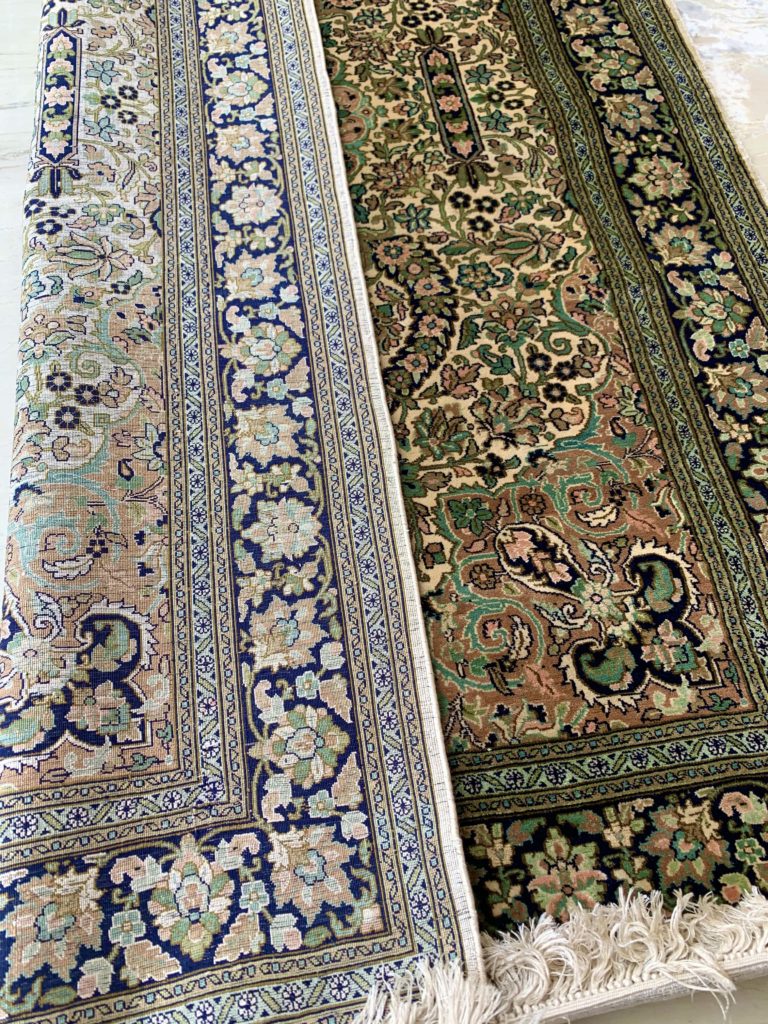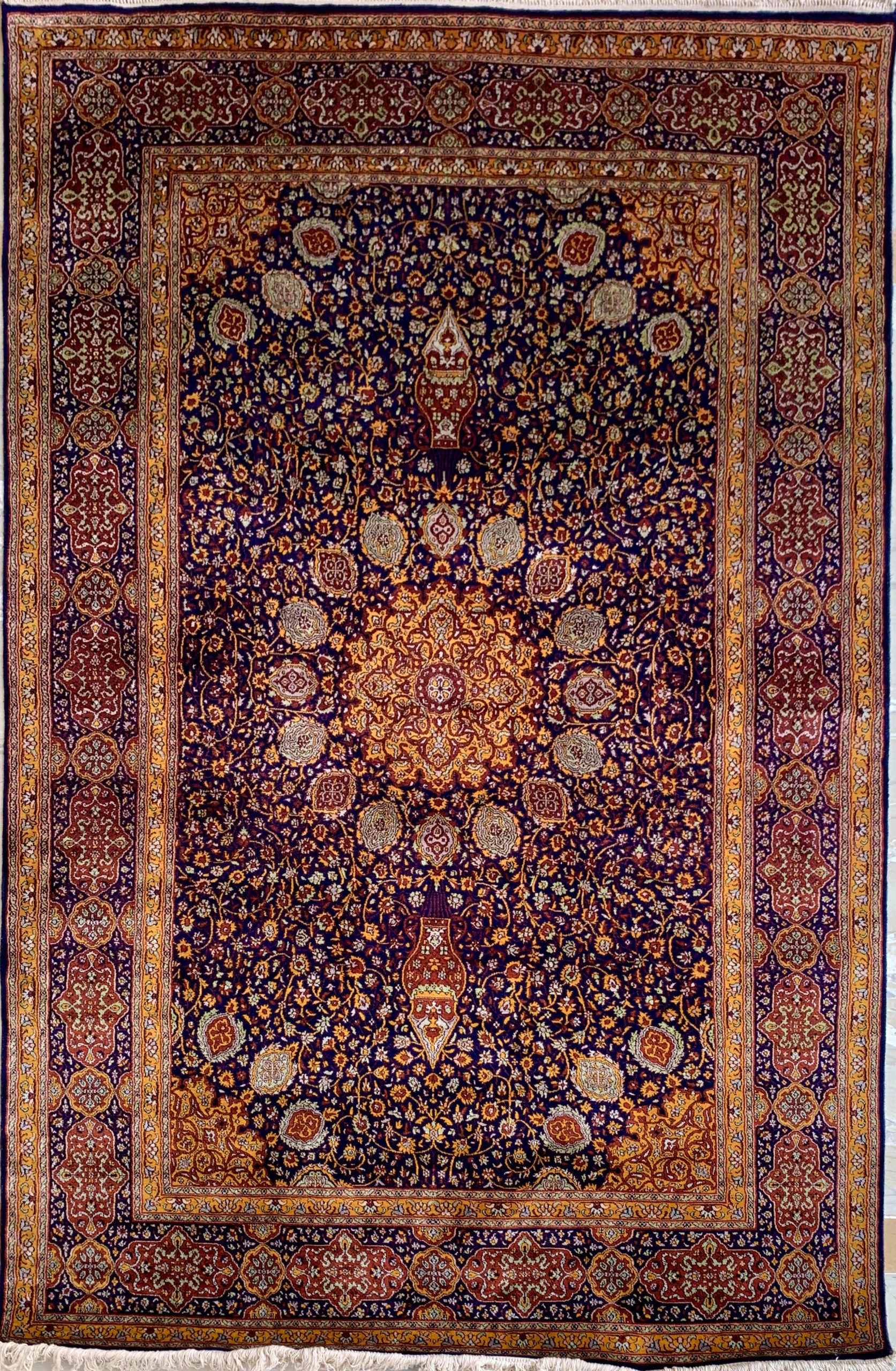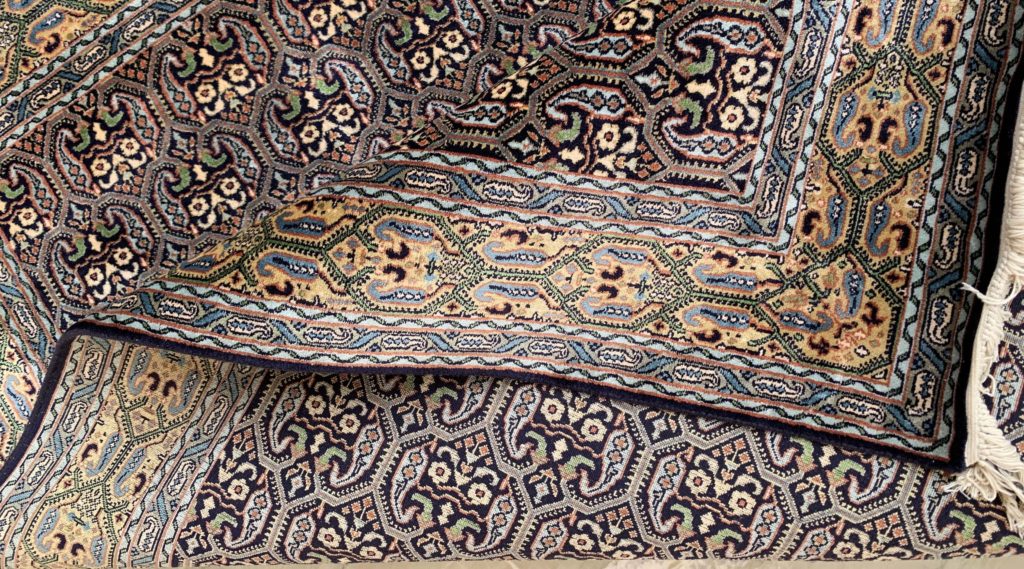About Kashmiri carpets
Kashmiri carpets
What is the history behind Kashmiri carpets?
There are different accounts as to how carpet making started in Kashmir – most say that it was Sultan Zain-ul-Abidin who brought artisans from Persia to Kashmir in the 15th century. Their exceptional workmanship is what made Kashmiri carpets become well-known in Europe through the British in the 18th and 19th century. Nowadays there are less and less artisans who are skilled in the art of creating a Kashmiri rug. It used to be a trade that was passed down in families, but due to higher prices for materials, low wages for the artisans, and competition through cheap imitations or counterfeit carpets, it’s an art that is becoming increasingly rare. With the purchase of a Kashmiri carpet you don’t only support the still existing artisans, you also receive a luxurious item with a piece of history.
What makes Kashmiri carpets special?
Kashmiri carpets are always handmade and knotted, with a special technique that makes them plush and comfortable.

Which designs are being used in Kashmiri carpets?
Kashmiri carpets often show oriental, floral designs or a tree of life pattern.
How long does it take to make a Kashmiri carpet?
The making of a carpet will take anything from several months to over a year to complete, there may be a million knots per square meter. The more knots and the higher the knot density, the higher the value of the carpet.

How is the process of making a Kashmiri carpet?
The first step in the creation of a Kashmiri carpet is the creation of the design. Motives, colors and layout of the carpet are being decided. The written code the weaver will follow while creating the carpet is called “Talim”.
Once the design is finalized, the yarn is sent for dying.
Then the weaver sets up his loom and begins with the weaving. Warps are the threads running through the length of the carpet. Around them, the weaver creates the knots and fixes them with wefts, which are then beaten down with a comb beater in order to fix everything well. The amount of knots per square inch is what will determine the value of the carpet.
Which materials are being used in order to make Kashmiri carpets?
The finest form of a Kashmiri carpet is a Silk on Silk Carpet (S/S). In these carpets, silk is used for both the warp and the weft.
In Silk on Cotton Carpets (S/C), the weft consists of silk, while cotton is used for the warp.
Wool Carpets consist of wool in weft and warp.
Staple Carpets (STP) are made of synthetic silk or merchandized cotton. Their feeling is silk-like, although they don’t contain real silk.

